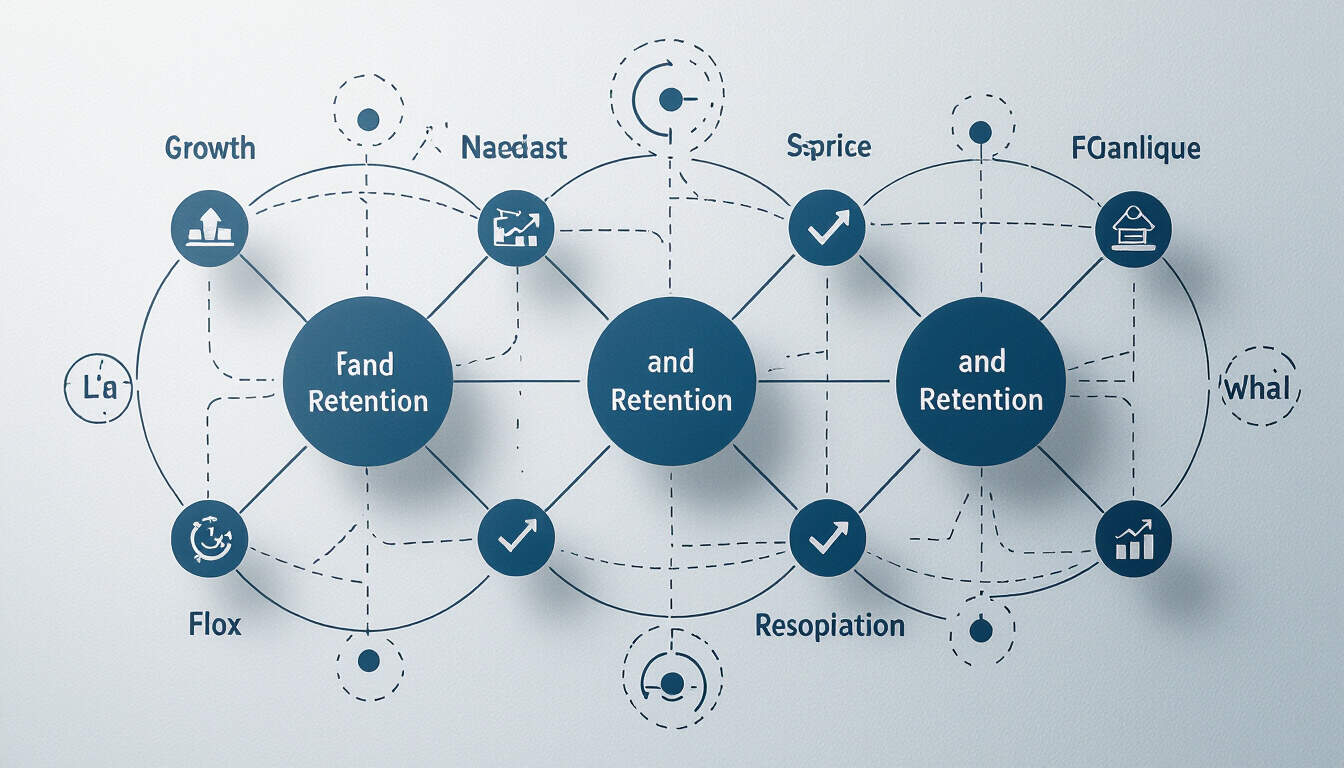Exponential Feedback Cycles in Customer Retention Tactics
 by Thaddeus Blanda
by Thaddeus Blanda
Customer retention tactics drive growth through loops that amplify loyalty and revenue. By focusing on strategies in business and technology, individuals and organizations can foster ongoing cycles of improvement and development, leading to sustained success.

Customer retention tactics play a key role in building lasting relationships that fuel growth. These approaches create feedback cycles where satisfied customers return and bring others, leading to faster expansion.
In business, keeping customers engaged means more than just transactions. Companies use methods like loyalty rewards and regular check-ins to encourage repeat visits. For example, a simple email campaign can prompt customers to come back, and each return strengthens the bond. This starts a cycle where positive experiences lead to more purchases and referrals.
One effective tactic involves personalized offers based on past behavior. Businesses analyze data to send targeted suggestions, which increases satisfaction and loyalty. Over time, this builds a community of advocates who share their experiences, drawing in new customers and expanding the base.
Technology enhances these efforts by providing tools for better engagement. Software tracks interactions and predicts needs, allowing for timely interventions. For instance, apps send reminders or recommendations, keeping customers involved without overwhelming them. As users respond positively, the system learns and improves, creating a self-reinforcing loop of better service and higher retention.
Applying Feedback Cycles in Personal Development
Individuals can also adopt similar principles to improve their own growth. Just as businesses retain customers, people can maintain habits that lead to ongoing progress. Setting small, achievable goals creates a foundation for success, where each accomplishment motivates the next.
In personal contexts, tracking progress through journals or apps helps identify patterns. This mirrors business tactics by turning routine actions into a cycle of reinforcement. For example, daily exercise not only builds health but also boosts confidence, encouraging further efforts. Such loops turn isolated actions into sustained development.
When combined with business strategies, technology aids personal routines. Fitness trackers monitor activity and provide insights, helping users adjust their plans. This integration shows how customer retention ideas apply beyond commerce, fostering individual advancement.
Real-World Examples and Outcomes
Many organizations see tangible benefits from these tactics. A retail company might implement a points system where purchases earn rewards, leading to increased visits. As customers redeem points, they feel valued, perpetuating the cycle.
In technology sectors, platforms use algorithms to suggest content, keeping users engaged longer. This not only retains current users but also attracts others through shared recommendations, amplifying reach.
For personal growth, professionals apply feedback principles by seeking feedback in their careers. Regular self-reviews help refine skills, creating a loop of continuous learning and achievement.
Challenges and Solutions
While effective, these tactics face obstacles like market changes or customer fatigue. Businesses must stay adaptable, using data to refine approaches and maintain cycles.
Solutions include testing new methods and gathering input to ensure relevance. By doing so, organizations keep their strategies fresh and responsive.
In summary, customer retention tactics leverage feedback cycles to drive exponential gains. Whether in business, technology, or personal spheres, these methods build momentum that leads to lasting success.
